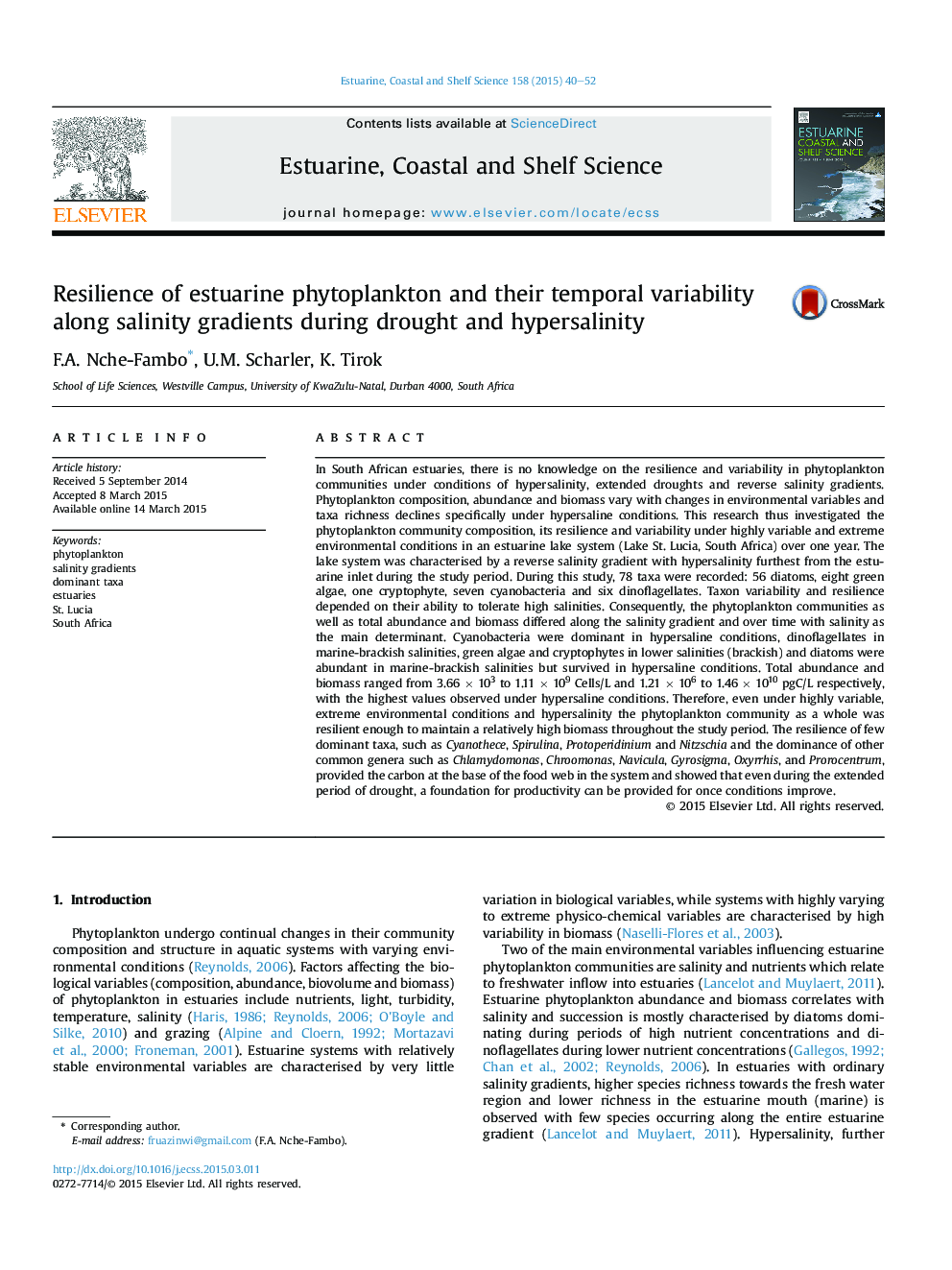| Article ID | Journal | Published Year | Pages | File Type |
|---|---|---|---|---|
| 4539500 | Estuarine, Coastal and Shelf Science | 2015 | 13 Pages |
•Variability of individual taxa abundance and biomass was high over space and time.•Overall phytoplankton abundance and biomass remained relatively stable.•Taxon richness was lowest under hypersaline conditions.•Resilience of few taxa under extreme conditions of hypersalinity ensured stable biomass.•Phytoplankton community composition was governed mainly by salinity.
In South African estuaries, there is no knowledge on the resilience and variability in phytoplankton communities under conditions of hypersalinity, extended droughts and reverse salinity gradients. Phytoplankton composition, abundance and biomass vary with changes in environmental variables and taxa richness declines specifically under hypersaline conditions. This research thus investigated the phytoplankton community composition, its resilience and variability under highly variable and extreme environmental conditions in an estuarine lake system (Lake St. Lucia, South Africa) over one year. The lake system was characterised by a reverse salinity gradient with hypersalinity furthest from the estuarine inlet during the study period. During this study, 78 taxa were recorded: 56 diatoms, eight green algae, one cryptophyte, seven cyanobacteria and six dinoflagellates. Taxon variability and resilience depended on their ability to tolerate high salinities. Consequently, the phytoplankton communities as well as total abundance and biomass differed along the salinity gradient and over time with salinity as the main determinant. Cyanobacteria were dominant in hypersaline conditions, dinoflagellates in marine-brackish salinities, green algae and cryptophytes in lower salinities (brackish) and diatoms were abundant in marine-brackish salinities but survived in hypersaline conditions. Total abundance and biomass ranged from 3.66 × 103 to 1.11 × 109 Cells/L and 1.21 × 106 to 1.46 × 1010 pgC/L respectively, with the highest values observed under hypersaline conditions. Therefore, even under highly variable, extreme environmental conditions and hypersalinity the phytoplankton community as a whole was resilient enough to maintain a relatively high biomass throughout the study period. The resilience of few dominant taxa, such as Cyanothece, Spirulina, Protoperidinium and Nitzschia and the dominance of other common genera such as Chlamydomonas, Chroomonas, Navicula, Gyrosigma, Oxyrrhis, and Prorocentrum, provided the carbon at the base of the food web in the system and showed that even during the extended period of drought, a foundation for productivity can be provided for once conditions improve.
Graphical abstractFigure optionsDownload full-size imageDownload high-quality image (120 K)Download as PowerPoint slide
